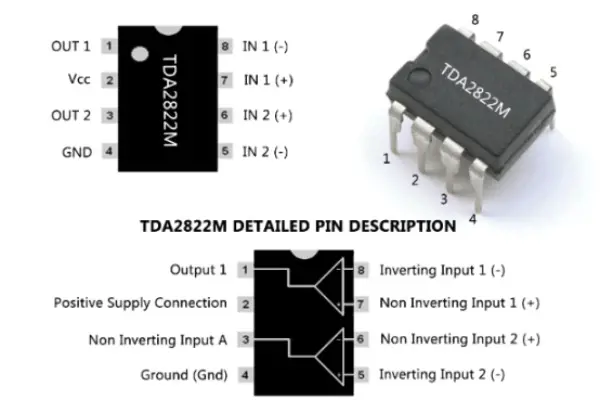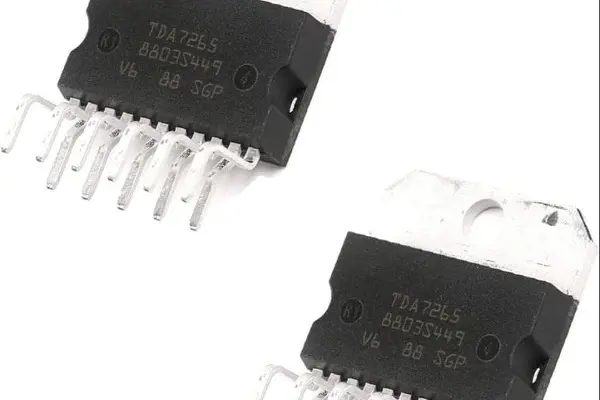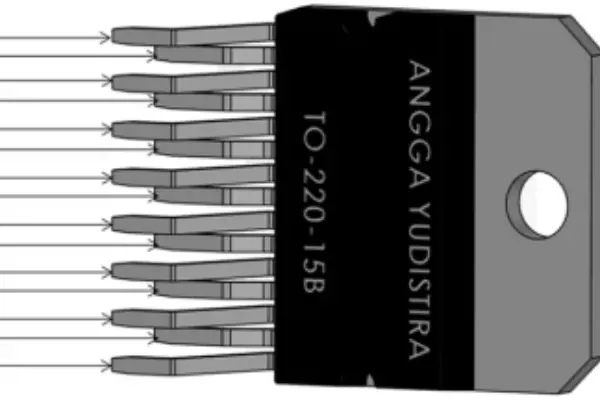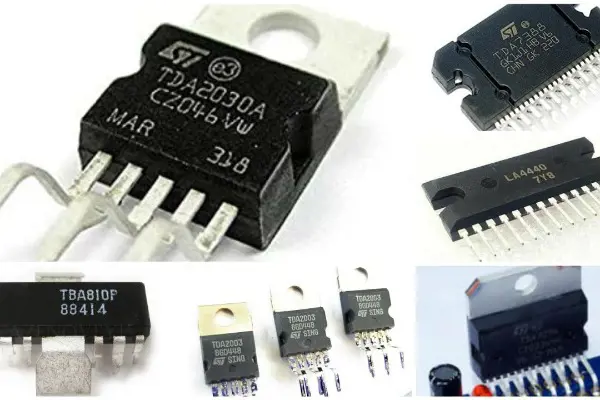L298 H-Bridge Motor Driver IC: Datasheet, Specification, Pinout and Circuit Diagram
 Published: Aug 02, 2023
Published: Aug 02, 2023
Contents
The L298 H-Bridge Motor Driver IC is a widely used and versatile integrated circuit designed to control and drive DC motors and stepper motors.
In this article, we will delve into the datasheet, specifications, pinout, and circuit diagram of the L298 H-Bridge Motor Driver IC, providing valuable insights to both beginners and experienced electronics enthusiasts seeking to harness the potential of this motor driver in their projects.
What is L298 Bridge IC
L298 is L298N in 15-pin Multiwatt package, which contains 4-channel logic drive circuit; it is a special driver for two-phase and four-phase motors, that is, a high-voltage and high-current dual full-bridge driver containing two H-bridges, receiving standard TTL logic Level signal, can drive the motor below 46V, 2A.
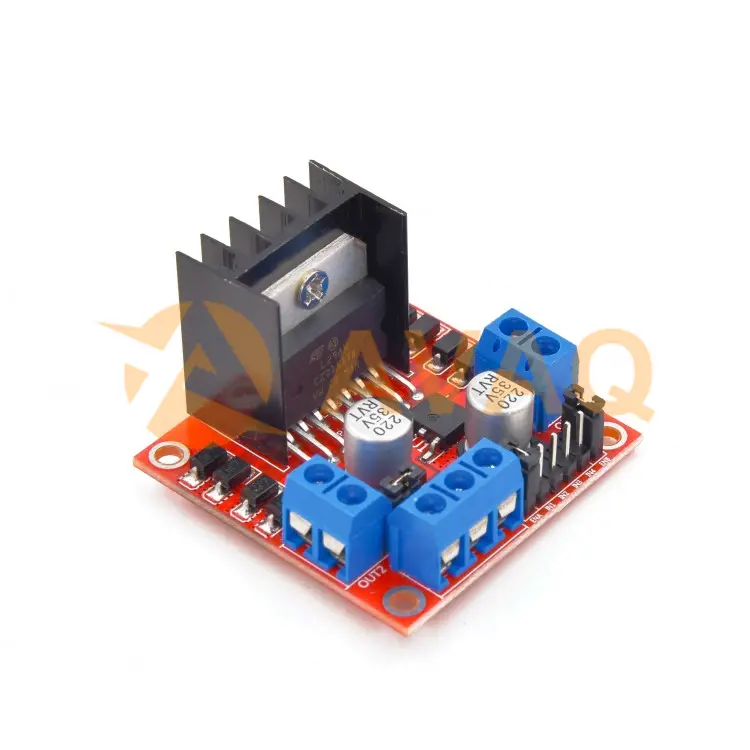
L298 motor driver IC is a single chip used in motor driver module to control the speed of DC motor. Currently, the most commonly used motor driver IC compared to the L298 is the 293D Lee 2938N.
L298 motor drivers are commonly used in RC cars and automated robots and the input provided to the motor driver module comes from controllers like Arduino. So this logic input is only used to control the direction of the motor connected to the motor driver C. The motor driver module mainly consists of the motor driver C, which is an essential part of the module. This single C can control the motors alone, but using the motor driver module by interfacing with an Arduino makes it easy.
L298 Bridge IC Specification
The main features and specifications of the L298 IC include the following points:
- Operating voltage up to 46v.
- Total DC current up to 4A.
- Low saturation voltage.
- Over temperature protection.
- Power consumption of 25w.
- Operating voltage range of +5 to +46v Maximum supply voltage is 50v.
- Maximum input and enable voltage is +7v.
- TTL control input.
- Storage temperature range of -40°c - 150°c.
- Operating temperature range is -23°c to -130°c.
- Maximum current allowed through each output is 3A.
L298 Bridge IC Features
1. Dual H-Bridge Configuration
The L298 IC contains two independent H-bridge circuits, each capable of driving a single DC motor or one coil of a bipolar stepper motor.
2. High Voltage and Current Capability
It can handle a wide range of motor voltages up to 46V and currents up to 2A per bridge, making it suitable for driving various types of motors.
3. Low Saturation Voltage
The internal MOSFETs used in the H-bridge have low ON-resistance, resulting in minimal voltage drop across the bridge when the motor is fully turned on.
4. Logic Inputs
It has logic inputs for controlling the direction and speed (PWM) of the connected motors. It requires two control signals (IN1 and IN2) for each motor.
5. Built-in Diodes
The IC includes built-in flyback diodes (freewheeling diodes) for protection against voltage spikes generated by the motor coils during switching.
6. Thermal Protection
The L298 IC incorporates thermal shutdown protection to prevent damage due to overheating. When the chip's temperature exceeds a certain threshold, it automatically shuts down until it cools down.
7. Enable Inputs
There are two enable inputs (EN1 and EN2) that can be used to enable or disable the respective motor bridges, allowing for easy control of individual motors.
8. Parallel Operation
The IC can be used in parallel to combine the current-carrying capabilities of both bridges, effectively doubling the current handling capacity.
9. Simple Heat Sink
The L298 requires a simple heat sink to dissipate heat effectively when handling higher current levels.
10. Wide Operating Temperature Range
The L298 can operate in a wide temperature range, making it suitable for various environments and applications.
L298 Bridge IC Pinout
Here is the description of L298 IC pinout,
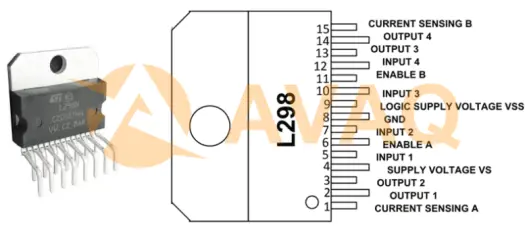
|
Pin Number |
Pin Name |
Description |
|
1 |
ENA |
Enable input for Motor A. Active high to enable. |
|
2 |
IN1 |
Control input 1 for Motor A. |
|
3 |
IN2 |
Control input 2 for Motor A. |
|
4 |
GND |
Ground (0V) reference. |
|
5 |
VSS |
Supply Voltage (5V). |
|
6 |
VSS |
Supply Voltage (5V). |
|
7 |
IN3 |
Control input 1 for Motor B. |
|
8 |
IN4 |
Control input 2 for Motor B. |
|
9 |
ENB |
Enable input for Motor B. Active high to enable. |
|
10 |
OUT1 |
Output 1 for Motor A. |
|
11 |
OUT2 |
Output 2 for Motor A. |
|
12 |
OUT3 |
Output 1 for Motor B. |
|
13 |
OUT4 |
Output 2 for Motor B. |
|
14 |
VSS |
Supply Voltage (5V). |
|
15 |
Vs |
Motor Supply Voltage (up to 46V). |
L298 Bridge IC Circuit Diagram
In the following circuit, one of the H-bridges of the L298 is used. The circuit can be designed with two push buttons, denoted as Q1 and Q. These push buttons are used to control the inputs to bridge A. The inputs to bridge A are provided by a microprocessor or microcontroller.
These logic inputs are provided through a microprocessor or microcontroller in the application circuit. The four diodes used in the circuit are flyback diodes that protect (C from voltage spikes.
Also, the function of bridge A depends largely on the enable pin. Once the enable pin is pulled high using a resistor, Bridge A will be enabled and start working. Similarly, when it is pulled to GND, it will be disabled and hence stop working.
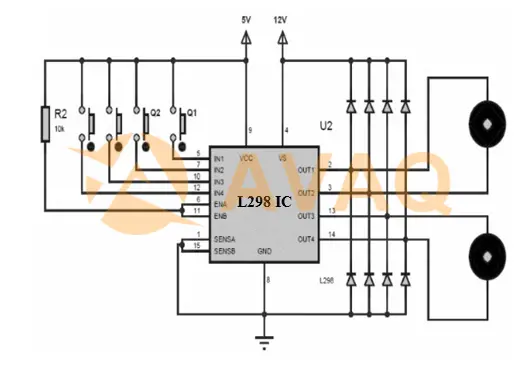
After connecting the circuit, you need to press the two buttons Q1 and Q2 to change the current between the two output pins OUT1 and OUT2. The logic control is as follows.
- When pushbutton Q1 is high and Q2 is low, then the current is positive
- When button Q1 is low and Q2 is high, the current is reversed.
- When two buttons are equal, e.g. Q1=Q2, then it is a quick stop motor.
If button Q1 is pressed, then current starts flowing from output to output 2 and the direction of rotation of the motor will be clockwise. Similarly, if the 2 button is pressed and current begins to flow from output 2 to output 1, the direction of the motor will be counterclockwise.
If two buttons such as Q1 and Q2 are pressed or released at the same time, the motor will stop immediately. Thus, in this way, the motor speed can be controlled by the L298 motor driver IC.
#1 L298N to control two DC motors
Circuit to drive two DC geared motors with the L298. Pins 6, 9 can be used for PWM control. If the robot project requires only straight forward movement, the two pairs of pins 5, 10 and 7, 12 can be connected to high and low levels respectively, and only two ports of the microcontroller can be used to give PWM signals to control 6, 11 to realize straight forward, turn, acceleration and deceleration movements.
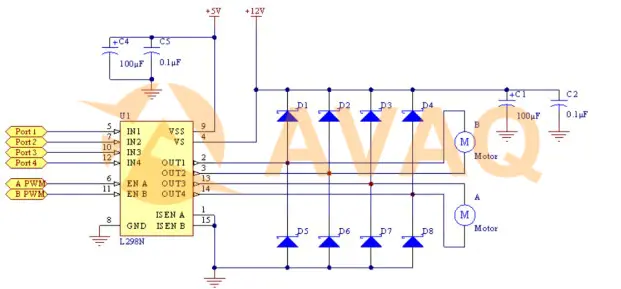
#2 L298N control two-phase four-wire stepper motor
With the stepper motor drive, pins 6,11 (ENA, ENB) can be connected to +5 V. The microcontroller controls the IN1/2/3/4 pins, and in accordance with a specific stepping beat, the stepper motor can be made to rotate step by step.
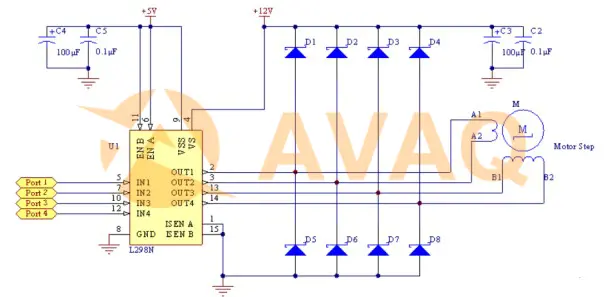
L298 Motor Driver IC Datasheet
Download L298 Motor Driver IC datasheet here>>
L298 Bridge IC Application
The main applications of L298 motor driver IC include the following components:
- Used in different fields such as robotics, embedded and so on. It is well known that microcontrollers operate at very low voltage and current, but motors use high voltage and current. Therefore, for this reason, motor driver ICs are used to provide high voltage and current.
- Suitable where H-Bridges are used .
- For high power based applications.
- Used where current control and PWM operation ICs are required .
- Used where the control unit provides only TTL output.
L298 Advantages and Disadvantages
Advantages of L298:
- Versatility: The L298 is a versatile motor driver IC that can handle both DC motors and stepper motors, making it suitable for a wide range of robotics and automation applications.
- Bidirectional Control: With its H-bridge configuration, it allows bidirectional control of DC motors, enabling forward and reverse motion.
- High Current Capability: It can handle relatively high currents (up to 2A per bridge), making it suitable for driving medium-sized motors.
- Simple Logic Interface: Its logic inputs for direction and speed control are straightforward to use, and it can easily interface with microcontrollers and other digital control circuits.
- Built-in Protection: The IC includes built-in flyback diodes for motor protection against voltage spikes during switching operations.
Disadvantages of L298:
High Power Dissipation:The L298 has a relatively high voltage drop across its internal switches, leading to higher power dissipation and potential heat generation. It may require an external heat sink to handle higher currents effectively.Inefficient for High Voltages:While the L298 can handle a wide range of motor voltages, the internal voltage drop becomes more significant at higher supply voltages, leading to decreased efficiency.Limited Current Capacity:While the L298 is suitable for medium-sized motors, it may not be suitable for driving large motors that require higher current capabilities.Outdated Technology:The L298 is a relatively older motor driver IC, and newer options with more advanced features and better efficiency may be available in the market.Limited Stepper Motor Resolution:The L298 is not well-suited for precision stepper motor control since it lacks microstepping capability, which newer motor driver ICs offer for smoother and more precise movements.Additional Components:To operate the L298 efficiently and safely, you may need to add external components, such as diodes, capacitors, and possibly a heat sink, which adds to the overall circuit complexity.
Where to Buy L298 Bridge IC
The L298 bridge IC is widely available and can be purchased from various online electronics retailers and local electronics stores. Here are some common places where you can buy the L298N bridge IC:
- Online Retailers: Websites like Amazon, eBay, AliExpress, Banggood, and SparkFun often have the L298N IC available for purchase.
- Electronics Distributors: Websites like Digi-Key, Mouser, Avaq, and Arrow Electronics are reputable electronics distributors that stock a wide range of electronic components, including the L298N IC.
Conclusion
In conclusion, the L298 H-Bridge Motor Driver IC is a versatile and powerful component for controlling DC motors and stepper motors in various electronic projects. Its ability to handle high currents and voltages, along with its simple interfacing and robust design, makes it a popular choice among hobbyists, students, and professionals alike.
When using the L298 H-Bridge Motor Driver IC, refer to the datasheet and application notes to ensure proper circuit design and efficient motor control. Stay updated with the latest advancements in motor control technology, explore technical documentation, and experiment with different motor control setups to maximize the potential of the L298 IC in your projects.
 FAQ
FAQ
- Can the L298 IC be used with brushed DC motors and brushless motors?
- The L298 IC is specifically designed for driving brushed DC motors and bipolar stepper motors. It is not suitable for driving brushless motors, as they require different motor control techniques and driver circuits.
- Are there any heat considerations when using the L298 IC?
- Yes, since the L298 IC can handle high currents, it may generate heat during operation. It is essential to provide proper heat sinking to dissipate the heat and prevent the IC from overheating.
- How do I interface the L298 IC with a microcontroller or Arduino?
- The L298 IC can be interfaced with a microcontroller or Arduino using digital output pins to control the direction and enable pins to enable or disable the motors. By using PWM signals from the microcontroller, you can achieve speed control of the motors.
- Can the L298 IC drive stepper motors?
- Yes, the L298 IC can drive a bipolar stepper motor using both of its H-bridges. By controlling the IN1, IN2, IN3, and IN4 inputs in the appropriate sequence, the L298 can make the stepper motor rotate in steps.
L298N In Stock: 6276 $1.181
 Popular Industry Focus
Popular Industry Focus
Hot Products
-

DIP1524-01D3
STMicroelectronics, Inc
Signal Conditioning Diplexer GPS-GLONASS 2.4 to 2.7 GHz 25dBm
-
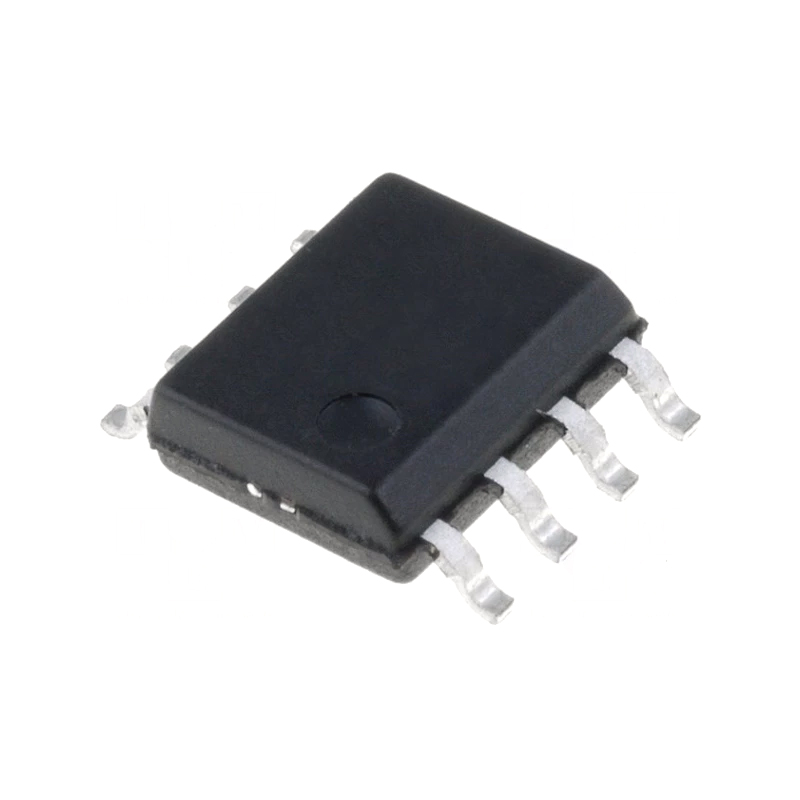
LMV393IDT
STMicroelectronics, Inc
General-purpose low voltage comparators
-
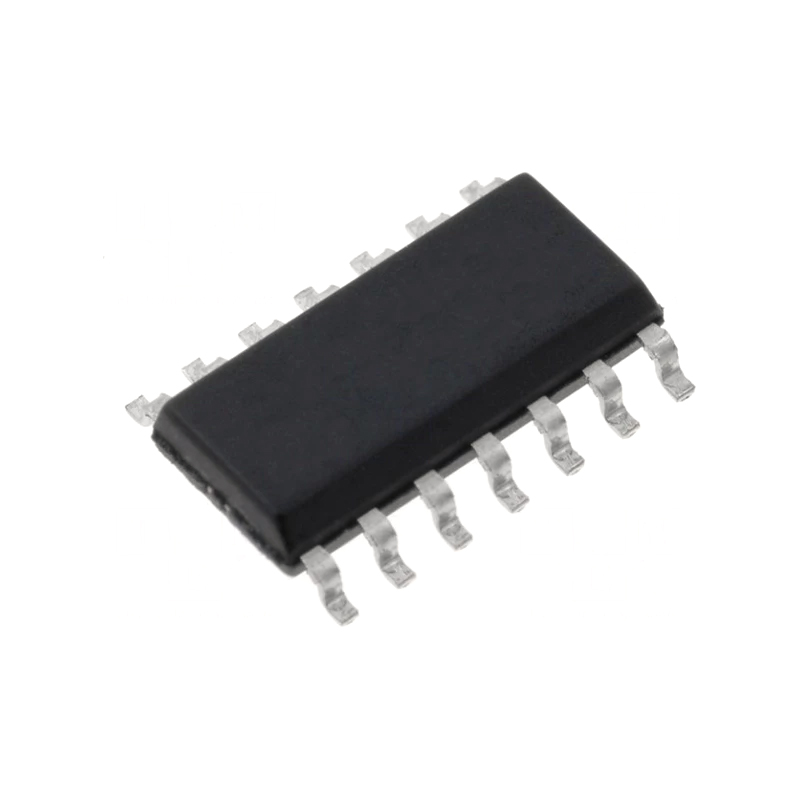
SA556DT
STMicroelectronics, Inc
Timers & Support Products General Purpose Dual
-

HCF4536BEY
STMicroelectronics, Inc
Programmable Timer IC 5MHz 16-DIP
-
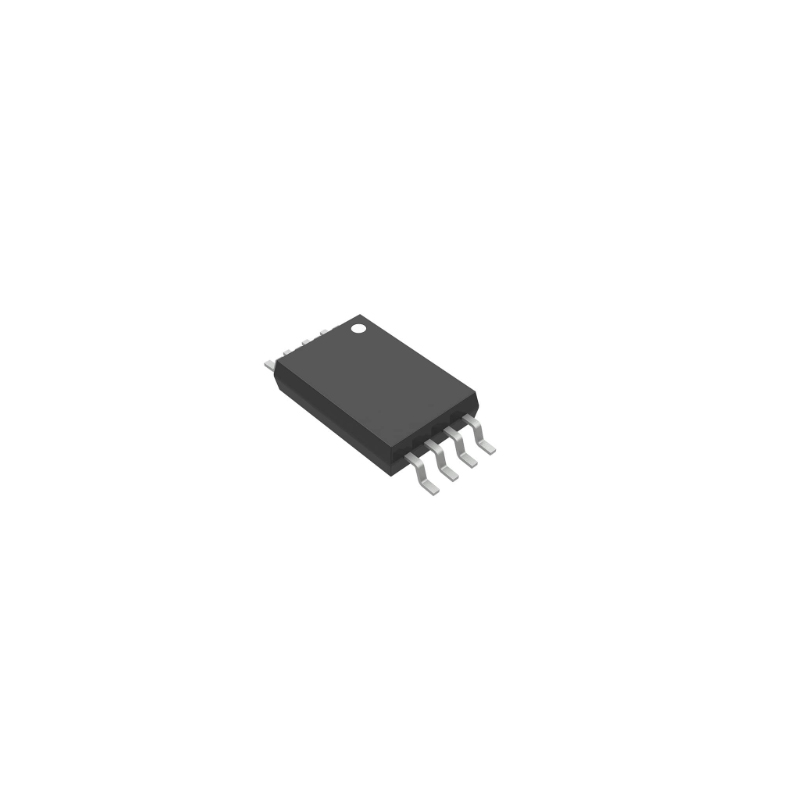
ST25DV16KC-IE8T3
STMicroelectronics, Inc
Dynamic NFC/RFID tag IC with 16-Kbit EEPROM, and fast transfer mode capability
-
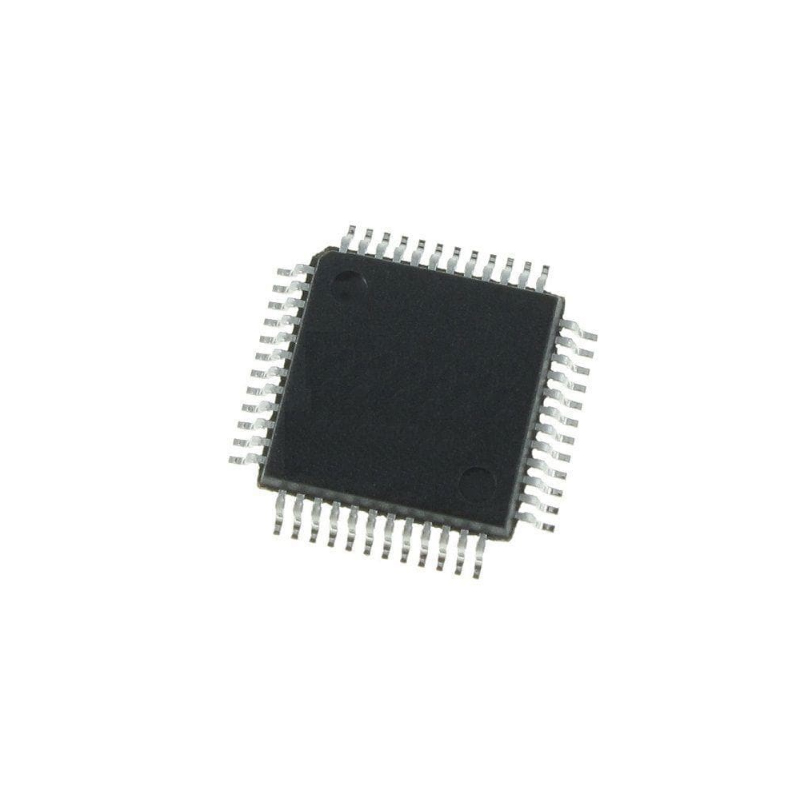
STV6418AH
STMicroelectronics, Inc
Analog Audio/Video 48-Pin TQFP Tray
Related Parts
-
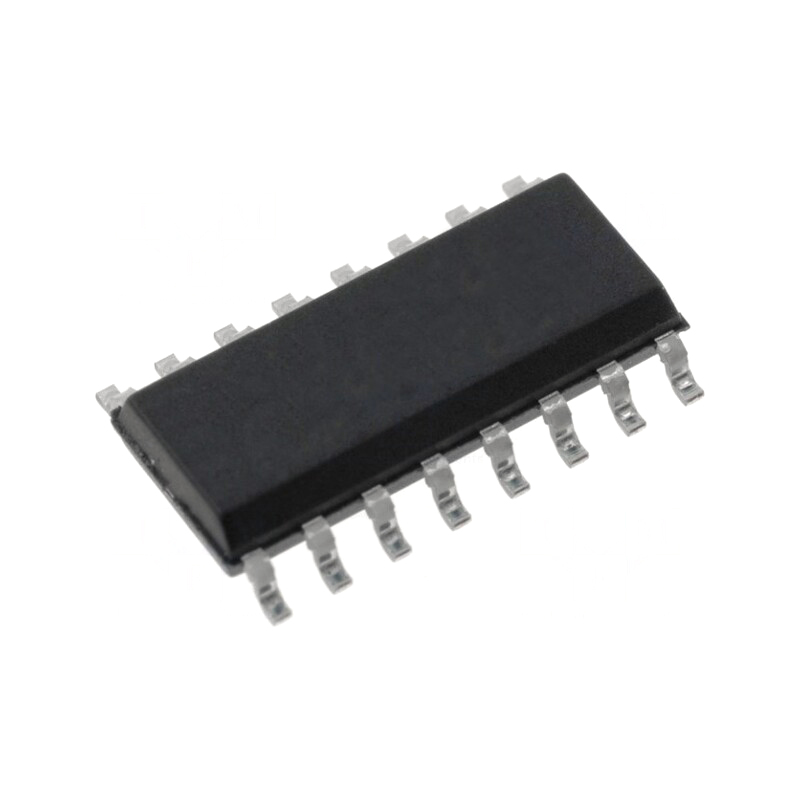
UC2872DWTR
Texas Instruments, Inc
Ballast Controller Controller 57kHz ~ 78kHz No 16-SOIC
-
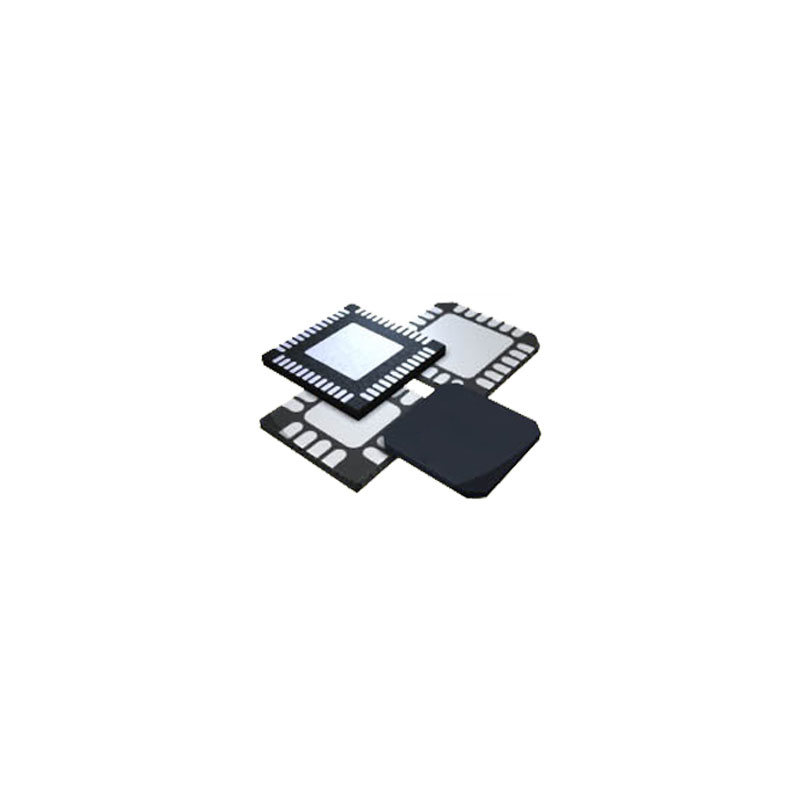
LTC5100EUF#TRPBF
Analog Devices, Inc
Laser Driver IC 3.2Gbps 1 Channel 3.135V ~ 3.465V 16-QFN (4x4)
-
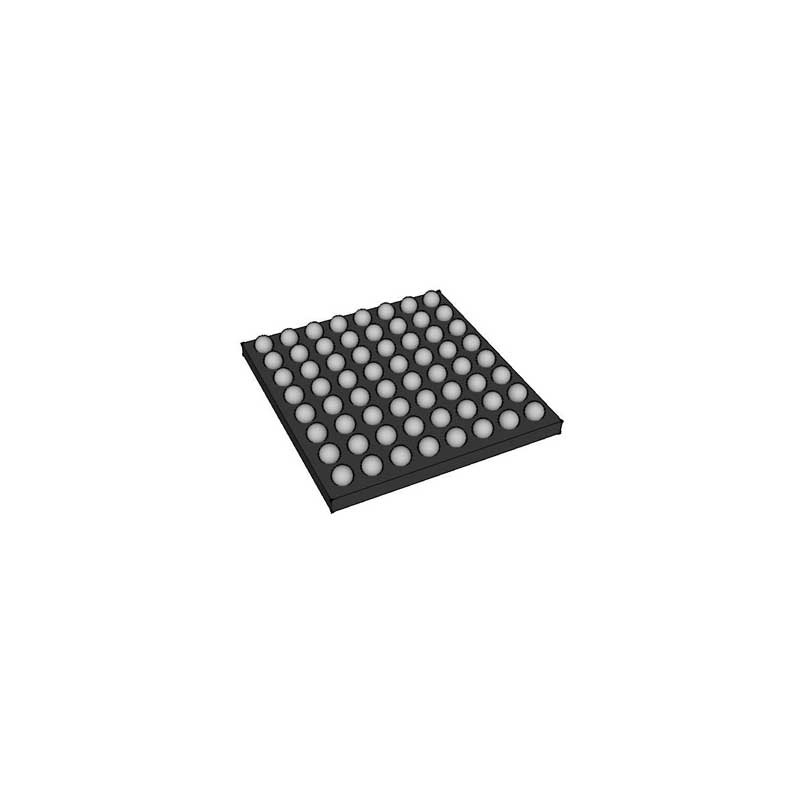
TC358743XBG
Toshiba Semiconductor
Display Drivers & Controllers HDMI to CSI-2 bridge chip
-
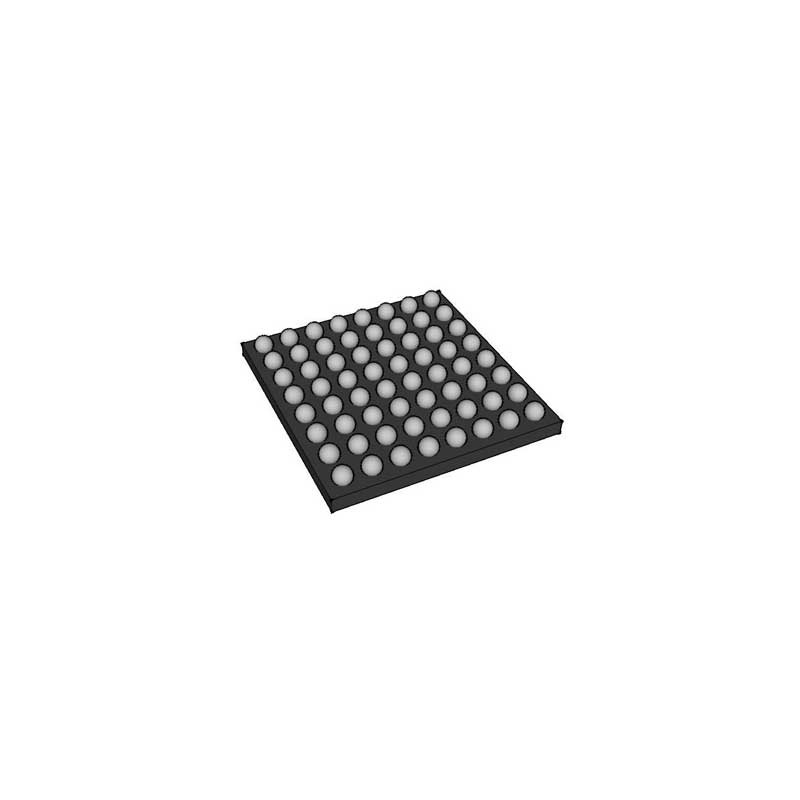
DS1862B+
Maxim Integrated
Laser Drivers XFP Laser Control and Digital Diagnostic IC
-
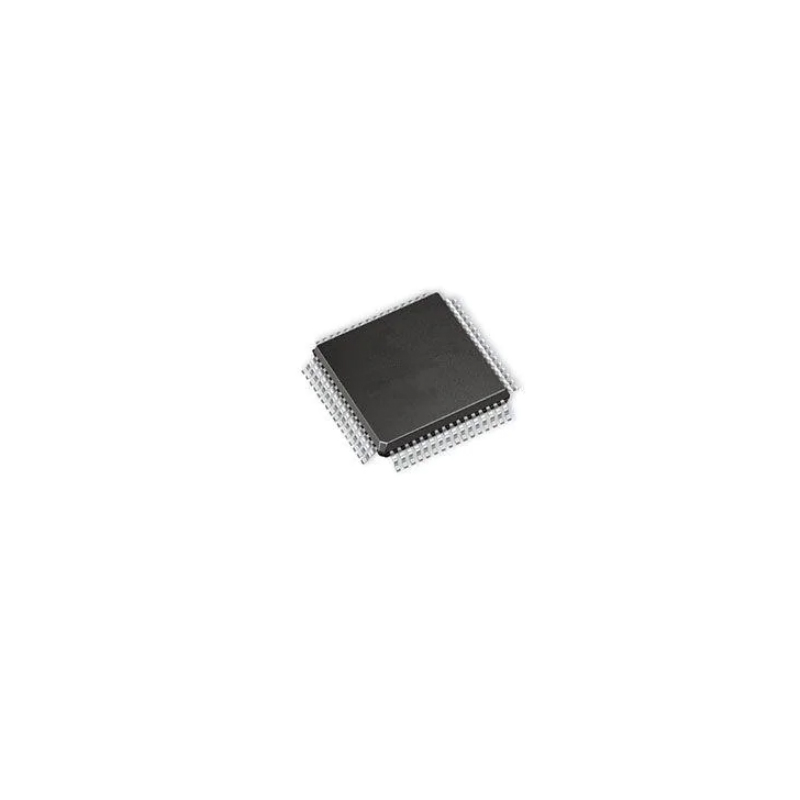
FPD87208AXAVS
Texas Instruments, Inc
Display Drivers & Controllers
-

TPS65642YFFR
Texas Instruments, Inc
- Converter, TFT LCD Voltage Regulator IC 5 Output 56-DSBGA (3.33x2.93)
-

MAX3738ETG+T
Maxim Integrated
Laser Driver IC 4.25Gbps 1 Channel 2.97V ~ 3.63V 24-TQFN (4x4)
-
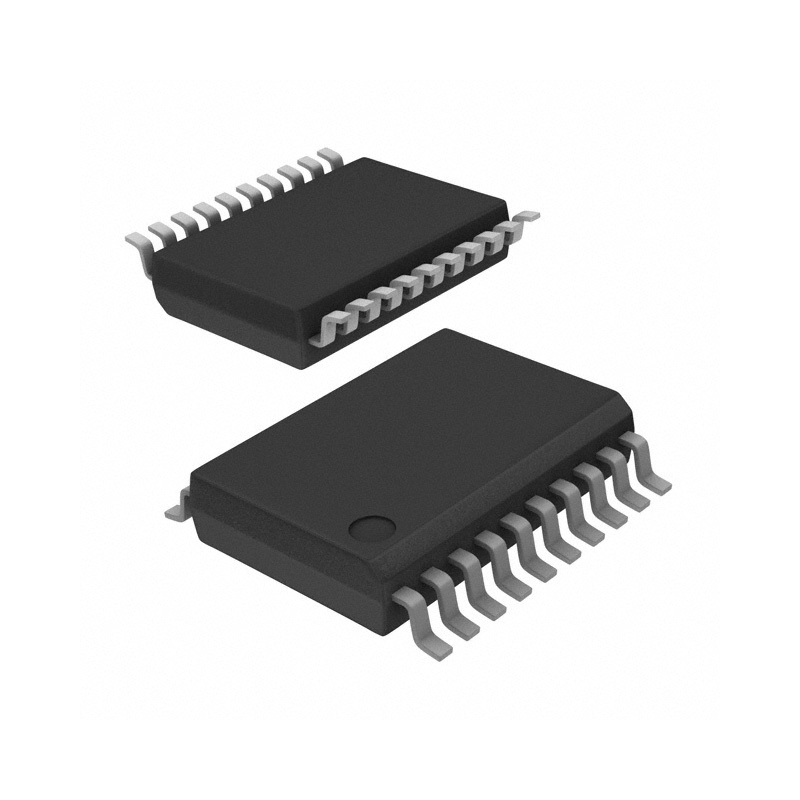
FAN7318BMX
ON Semiconductor, LLC
LCD Drivers LCD Backlight IC
-
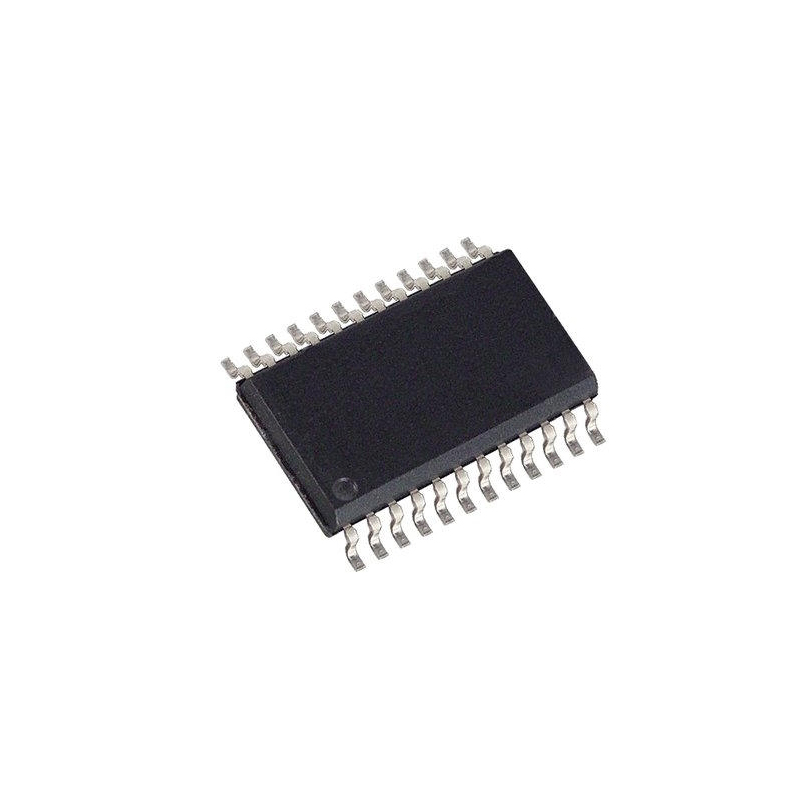
HV508LG-G
Microchip Technology, Inc
High Voltage Liquid Crystal Shutter Driver.
-

ONET8501VRGPRG4
Texas Instruments, Inc
Laser Driver IC 11.3Gbps 1 Channel 2.95V ~ 3.6V 20-QFN (4x4)
-

HV830LG
Microchip Technology, Inc
Display Drivers & Controllers HVCMOS
-

LP55281TLX/NOPB
Texas Instruments, Inc
12-channel RGB/White-LED driver with SPI/I2C Interface
-

LC75874WHS-SH-E
ON Semiconductor, LLC
LCD Drivers LCD DISPLAY DRIVER
-

NCL30486B1DR2G
ON Semiconductor, LLC
LED Driver IC 1 Output DC DC Controller Flyback Analog, PWM Dimming 500mA 9-SOIC
-

LV7109E-B-MPB-E
ON Semiconductor, LLC
Display Drivers & Controllers

 Update Time: Aug 04, 2023 Consumer Electronics
Update Time: Aug 04, 2023 Consumer Electronics